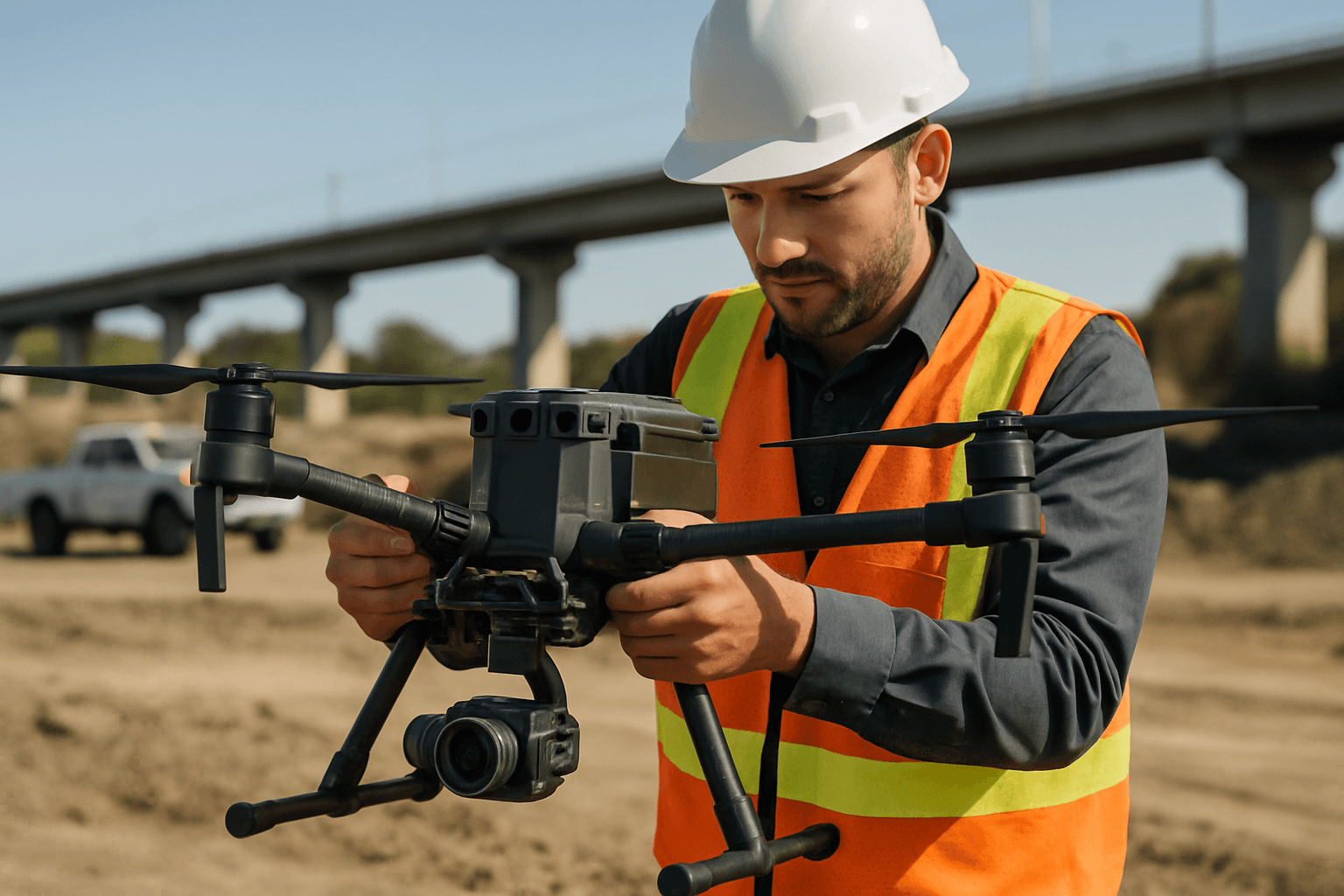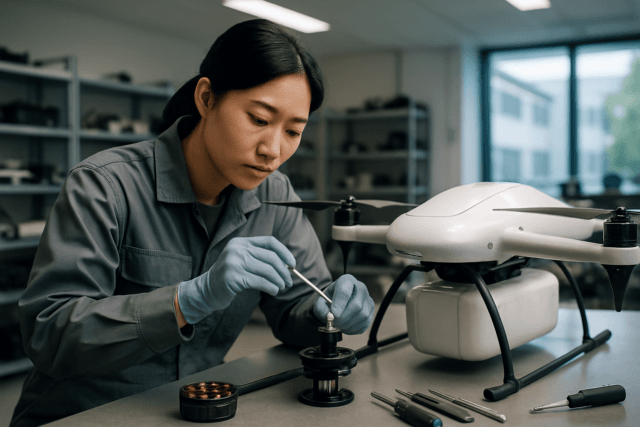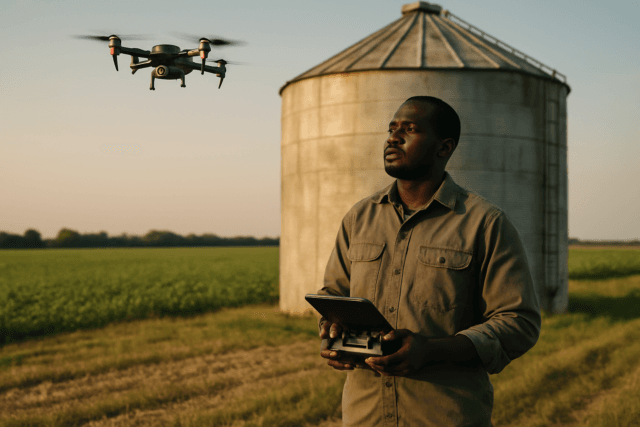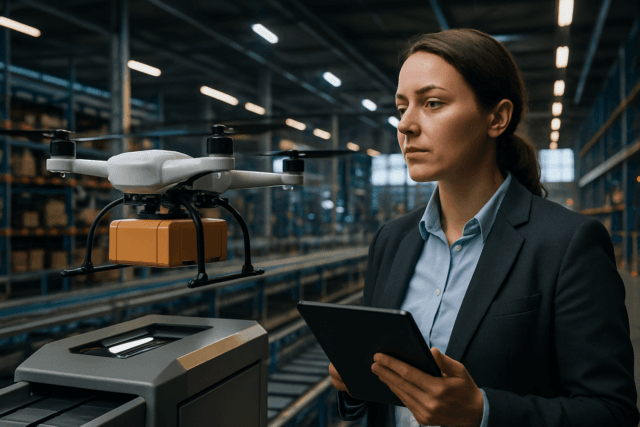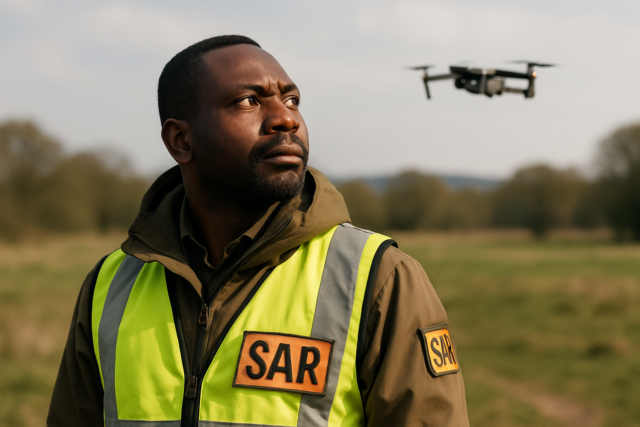Drones, also known as unmanned aerial vehicles (UAVs), have transcended their initial perception as mere novelties, establishing themselves as indispensable tools across diverse industries. Their ability to capture real-time data, automate processes, and access previously unreachable locations is revolutionizing operations and unlocking significant cost savings. This article explores the multifaceted ways in which drones are driving cost efficiency, highlighting their impact across various sectors.
Streamlining Operations and Slashing Labour Costs
One of the most prominent ways drones save money is by streamlining operations and drastically reducing labour costs. Traditional methods of surveying, inspection, and data collection often require large teams, specialized equipment, and extensive time commitments. Drones, however, can accomplish these tasks with significantly less manpower and in a fraction of the time.
- Land Surveying: Conventional land surveying can take days or even weeks, depending on the site’s size and terrain. Drones, on the other hand, can map large areas with high precision in just minutes, collecting thousands of data points in a single flight. This rapid data acquisition translates to faster project turnarounds and reduced downtime.
- Construction Site Monitoring: Drones equipped with high-definition cameras and sensors can monitor construction sites, track materials, and assess inventory in real-time. This eliminates the need for manual inspections, reduces labour costs, and allows resources to be reallocated to other critical areas of the project.
- Infrastructure Inspection: Inspecting bridges, power lines, and other critical infrastructure components traditionally involves costly and dangerous manned operations. Drones can access hard-to-reach locations, assess structural integrity, and provide real-time data without putting human lives at risk, while also reducing the need for expensive equipment like scaffolding and harnesses.
Enhancing Accuracy and Minimising Errors
Drones not only save time and labour but also enhance the accuracy of data collection, leading to fewer errors and costly rework. Their ability to capture detailed imagery and create 3D models provides a more precise representation of sites and assets compared to traditional methods.
- Accurate Material Estimates: Inaccurate material estimates can lead to project delays and budget overruns. Drones can quickly provide a precise representation of a construction site, allowing for accurate material estimates and minimizing waste. By comparing the real site to the engineer’s model, drones can identify miscalculations early on, preventing costly errors.
- Early Detection of Issues: Drone-imaging technology and 3D modelling enable the early detection of structural issues in buildings, bridges, and other infrastructure. This proactive approach allows for timely repairs, preventing minor problems from escalating into major, expensive ones.
- Precise Mapping and Measurements: Drones equipped with GPS and advanced sensors can generate highly accurate maps and measurements of land, infrastructure, and other assets. This precision is invaluable in urban planning, construction, and resource management.
Improving Safety and Reducing Risk
Safety is a paramount concern across many industries, and drones play a crucial role in improving safety and reducing risk, which indirectly translates to significant cost savings. By taking on tasks that would otherwise be performed by humans in hazardous environments, drones minimize the potential for accidents, injuries, and fatalities.
- Construction Site Safety: Construction sites are inherently dangerous environments. Drones can survey roofs, high areas of buildings, and other hazardous locations, providing high-quality images and data without putting workers at risk. They also allow supervisors and safety managers to monitor sites remotely, identifying potential dangers and risky situations before they happen.
- Mining and Disaster Relief: In hazardous environments such as mining sites and disaster-stricken areas, drones can eliminate risks to human lives. They can access hard-to-reach locations, assess structural integrity, and provide real-time data without endangering personnel.
- Infrastructure Inspection: Inspecting power lines, bridges, and other infrastructure components often involves working at heights or in other dangerous conditions. Drones can perform these inspections remotely, reducing the risk of falls, electrocution, and other accidents.
Optimising Resource Management and Inventory Control
Efficient resource management and inventory control are essential for cost-effective operations. Drones can play a vital role in these areas by providing real-time data on resource availability, equipment location, and inventory levels.
- Tracking Materials and Equipment: Drones can track materials, monitor equipment, and assess inventory in real time on construction sites and in warehouses. This helps prevent material shortages, reduces equipment downtime, and ensures that resources are used efficiently.
- Efficient Inventory Management: In warehouses and distribution centres, drones can automate inventory management processes. They can efficiently count and track inventory, reducing the chances of errors and stockouts. This level of automation ensures that businesses maintain optimal inventory levels and avoid unnecessary carrying costs.
- Resource Monitoring: Drones can monitor natural resources such as water, forests, and agricultural land. This data can be used to optimize resource allocation, prevent waste, and ensure sustainable practices.
Enhancing Marketing and Client Communication
Drones also offer cost-effective solutions for marketing and client communication. High-quality aerial footage and imagery captured by drones can be used to create compelling marketing materials, showcase project progress, and connect clients to job sites remotely.
- Dynamic Marketing Content: Drones can capture dynamic photographs and videos of construction sites, buildings, and other assets that are difficult or impossible to replicate from the ground. This content can be used for marketing, recruitment, and public relations campaigns, enhancing brand image and attracting new business.
- Connecting Clients to Job Sites: Drone technology allows businesses to quickly and accurately connect clients to job sites, providing them with real-time updates on project progress. This fosters trust and transparency, leading to stronger client relationships and repeat business.
- Reduced Documentation Costs: Drones can reduce the amount of time and resources spent providing documentation for invoices and project reports. Aerial imagery and data can be easily integrated into these documents, providing a clear and concise record of progress.
Industry-Specific Examples of Cost Savings
The cost-saving benefits of drones are evident across a wide range of industries. Here are a few specific examples:
- Construction: Construction firms using drones have reported seeing a return on investment (ROI) within one year. Drones can streamline communications, reduce surveying time, provide accurate material estimates, and connect clients to job sites.
- Agriculture: Drones equipped with high-resolution cameras and sensors can monitor crops, identify diseases, and assess crop health over large areas in a fraction of the time it would take humans. This increased efficiency allows farmers to save valuable time and resources, ultimately leading to improved productivity.
- Infrastructure Inspection: One Italian use case suggests that drone-based dam inspection costs can be reduced by 40 to 60 percent. Drones can also cut the cost of thermographic inspections of utility-scale solar farms by 30 to 40 percent. For oil and gas pipelines, drones can reduce traditional surveying costs by nearly 90 percent.
- Last-Mile Delivery: In certain scenarios, such as delivering emergency shipments or serving low-demand areas, drones can save costs compared to traditional motorcycle or truck deliveries. Depot-based drone delivery can lead to up to 60 percent cost savings compared to truck-only delivery when servicing low-demand areas.
Addressing the Challenges and Considerations
While the cost-saving potential of drones is undeniable, it’s important to acknowledge the challenges and considerations associated with their adoption.
- Initial Investment: The initial investment in drone technology, including the cost of the drone itself, training, and software, can be a barrier for some businesses. However, the long-term cost savings and increased efficiency often outweigh the upfront costs.
- Regulatory Compliance: Operating drones requires compliance with local regulations and airspace restrictions. Businesses need to ensure that their drone pilots are properly trained and certified, and that they are operating within the legal framework.
- Data Security and Privacy: Drones collect vast amounts of data, raising concerns about data security and privacy. Businesses need to implement appropriate security measures to protect sensitive information and comply with privacy regulations.
The Future of Drone Technology and Cost Savings
The future of drone technology is promising, with ongoing advancements in autonomous flight, artificial intelligence (AI), and sensor technology. These advancements will further enhance the cost-saving potential of drones and unlock new applications across various industries.
- Autonomous Drones: Autonomous drones equipped with AI can make decisions independently, further improving efficiency and reducing costs. AI-powered drones can analyse patterns, identify potential risks, and suggest solutions, enhancing accuracy even further.
- AI-Powered Analytics: AI algorithms can be used to analyse the data collected by drones, providing valuable insights and automating tasks such as defect detection and predictive maintenance.
- Enhanced Sensor Technology: Advancements in sensor technology, such as LiDAR and hyperspectral imaging, are expanding the capabilities of drones and enabling them to collect even more detailed and accurate data.
Conclusion
Drones have emerged as a powerful tool for driving cost efficiency across a wide range of industries. By streamlining operations, enhancing accuracy, improving safety, optimising resource management, and enhancing marketing efforts, drones are helping businesses save money, improve productivity, and gain a competitive edge. While challenges and considerations exist, the long-term cost-saving potential of drones is undeniable, and their adoption is poised to continue growing as technology advances and regulations evolve. For businesses seeking to maximise their efficiency and reduce costs, embracing drone technology is no longer a luxury but a necessity.

